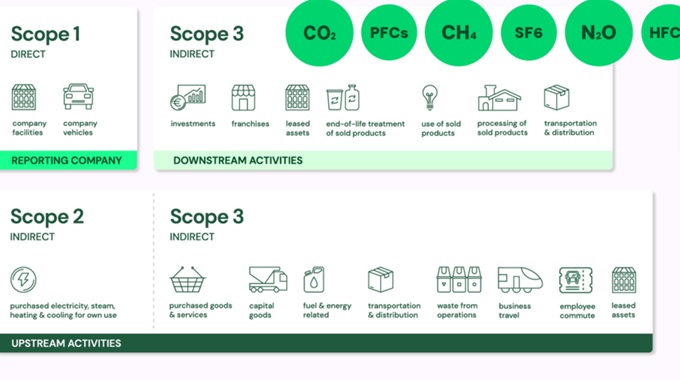Ch 6. Regulation and Scope 3 Emissions
Introductory articles on emerging exposures, risk mitigation
and insurance risk transfer for clients of Omnisure.
A compendium of introductory ESG articles on emerging exposures, risk mitigation and
insurance risk transfer for clients of Omnisure with claims examples.
Martin Birch – March 2022
![]()
Chapter 6 – Regulation and Scope 3 Emissions
Climate policy – why there is no going back on ESG
Unlike some regulatory changes, the introduction of ESG data into financial reports will likely make a lasting impact on how business gets done because the signals from regulators respond to a deeper truth about what matters to the world today. Climate policy has over the last decade been a polarising political issue in Australian politics. The Australian Labour Party Government established a carbon pricing mechanism in 2012 and this was repealed by the Abbott Government in 2014. If interested, you can read about the former carbon price mechanism here.
Emissions Reduction Fund & Clean Energy Regulator
Now an Emissions Reduction Fund (‘ERF’) is the centrepiece of the current Australian Government’s policy to limit greenhouse gas emissions. Under the ERF, the Government purchases greenhouse gas abatement, quantified by Australian Carbon Credit Units through an auction process administered by the Clean Energy Regulator.
Australian Carbon Credit Units
Before a project can participate (or bid) in an ERF auction, it must be eligible and registered with the Clean Energy Regulator (“CER”) who issues Australian Carbon Credit Units (“ACCUs”). During 2021 commitments from corporations and governments to reach net zero emissions have more than doubled and created increased demand for Australian Carbon Credit Units (ACCUs). Our Foundation Document contains further information.
ACCUs are traded via brokers in the over-the-counter market. However the Clean Energy Regulator (CER), who issues ACCUs under the Emissions Reduction Fund (ERF), is facilitating the development of exchange traded market for emissions offsets (the Australian Carbon Exchange). This a very exciting development. You can read more about trading ACCUs in our Foundation Document 1.
In this particular chapter we review the regulatory frameworks related to Scope 3 emissions topic in Australia as discussed by Corrs Chambers Westgarth lawyers (“CCW”) and also the evolution of the case law in this area. A detailed summary of the decision in Mullaley Gas and Pipeline Accord Inc v Santos NSW (Eastern) Pty Ltd 2021 NSWLEC 110 (“MGPA v Santos”) on 18 October 2021, including its implications for proponents of fossil fuel developments and other major projects, is available here. CCW explain how the decision has further developed the law regarding Scope 3 emissions and is relevant to the assessment of future fossil fuel developments2.
According to CCW there is currently no requirement in Australia for companies to offset Scope 3 or ‘downstream’ greenhouse gas (GHG) emissions of a project as a precondition to obtaining planning approval for that project. In fact, there is little regulatory oversight for Scope 3 emissions whatsoever. Many companies do not record and report Scope 3 emissions as they are not required to under National Greenhouse and Energy Reporting scheme.
Greenhouse gas emissions are categorised into three groups or ‘Scopes’ by the most widely-used international accounting tool, the Greenhouse Gas (GHG) Protocol. Scope 1 covers direct emissions from owned or controlled sources 3. Scope 2 covers indirect emissions from the generation of purchased electricity, steam, heating and cooling consumed by the reporting company. Scope 3 includes all other indirect emissions that occur in a company’s value chain.
The classification of emissions as ‘Scope 1, 2 or 3’ is simply an accounting and reporting tool, and there is overlap between each. You can read more about this in our Foundation Document. In there you can also access a table produced by CCW Lawyers that summarises the legal position of each Australian jurisdiction.
GRAPHIC: Emissions Scope. (Source: https://plana.earth/academy/what-are-scope-1-2-3-emissions/)

Development Applications and Scope 3 emissions in NSW
In the absence of significant regulatory and policy change, the most significant, recent developments in issues concerning the assessment of the climate change impacts of a GHG-generating project have occurred in NSW courts. The courts have held that, despite there being no specific legal requirement for a consent authority to consider Scope 3 emissions when assessing a development application for a project (other than in the context of projects being assessed under the Mining SEPP), the projected GHG emissions of a project, including Scope 3 emissions, can be relevant during the assessment process. In some cases before the courts and other consent authorities, Scope 3 emissions have been a contributing factor in decisions to refuse particular projects. Please refer to our Foundation Document for further discussion on relevant legal cases.
Despite the difficulty of targeting indirect emissions, CCW Lawyers foresee regulators placing increased responsibility on emitters to control and mitigate their output. Even in the absence of regulation to this effect, it is clear that decision-makers and the community expect clear consideration of the impacts of downstream emissions, including Scope 3 emissions, and consideration of how such emissions can be minimised, where practicable and to the greatest extent possible, which will vary depending on how and where such emissions will be generated. The article referred to in this Chapter is part of Corrs Chambers Westgarth’s Insight collection called Frontier Sustainability: Navigating environment and climate-related risks and opportunities. Read more here.
1 Our Foundation Document is the original full text version of “ESG Discussions – Introductory articles on emerging exposures, risk mitigation & insurance risk transfer” for clients of Omnisure, compiled by Martin Birch. Register on our website for a full copy.
2 https://www.corrs.com.au/insights/scope-3-emissions-a-regulatory-cloud-soon-to-lift
3 https://www.carbontrust.com/resources/briefing-what-are-scope-3-emissions
Please contact Martin Birch for a copy of the full-text Foundation Document at martin.birch@omnisure.com.au


